Don't wanna be here? Send us removal request.
Text
2D time-domain spectrum in low-field NMR
Time domain nuclear magnetism (TD-NMR) is different from conventional frequency domain analysis. The term “time domain” is embodied in that it mainly uses relaxation time or time domain signals (chemical shifts in the non-frequency domain) for detection and analysis. Low-field NMR (generally Bo<0.5T) is the most fundamental analysis method. The application range of TD-NMR covers all walks of life, and has a wide range of applications in energy geology, food chemistry (such as solid fat composition and oilseed analysis), polymers, and medical pharmacy (such as obesity research, contrast agents, etc.).
The most used sequence in time domain NMR is CPMG, which has strong immunity (P180 is not allowed! It does not matter if the magnetic field is not uniform! It does not matter if the signal-to-noise ratio is poor!), it is very robust in T2 measurement It belongs to a single excitation sequence, and the test time is very fast. Repeated scanning measurement (usually a few seconds to ten seconds) can get thousands of echoes. It is used in oil logging (wellbore test conditions). Exclusive grace in China.
In addition to CPMG sequence, TD-NMR also has basic FID sequence, IR sequence, STE sequence and PFG sequence. These are the “bases” for the advanced sequence of two-dimensional spectra to be introduced today (like the bases in linear algebra, space coordinates and space vectors can be combined from the bases), which form IR-CPMG, SR-CPMG, IR-FID, PFG- Advanced sequences such as CPMG, STE-CPMG, APGSTE-CPMG, etc. can be seen in many top publications. They are already as important as CT and SEM inspection techniques in the field of petroleum physics (petrophysics). Two-dimensional spectrum appeared in frequency domain nuclear magnetic field for a long time but appeared later in time domain. About 2001-2002, Song et al., a nuclear magnetic expert of Schlumberger-Doll Research Center, proposed the time-domain two-dimensional spectrum. Concept, application of data compression technology (Data Compression) and inverse Laplace transform (ILT), successfully launched the T1T2 two-dimensional spectrum, DT2 also emerged in the same year on the basis of the solid research foundation of the heterogeneous field diffusion research expert Hürlimann. . Subsequently, various two-dimensional spectrum technologies have sprung up (Gin-T2, DD, T2-T2, T1-T2* etc.), among which T1T2 and T2D have been commercialized in nuclear magnetic logging (T2D: oil-water saturation calculation, T1T2: Evaluation of hydrocarbon generation potential of unconventional oil reservoirs)
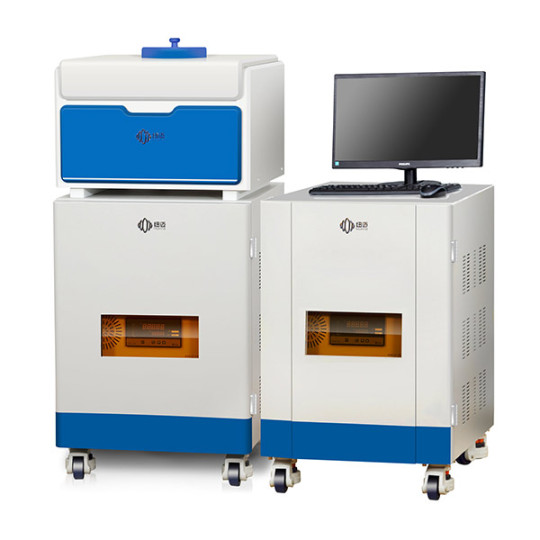
(source:https://www.nmranalyzer.com/2d-time-domain-spectrum-in-low-field-nmr.html)
0 notes
Text
What is Time domain NMR(TD-NMR)
Principle
Atomic nuclei, such as hydrogen and fluorine, have a positive charge. These nuclei themselves have an important property, which is their spin. A charged spin body produces a circular current, and a circular current can form a magnetic field. In this way, each atomic nucleus is a small magnet, just like a small compass. When there is no external magnetic field, the direction of the nuclear magnetic field in the matter is randomly distributed. When an object is placed in an external magnetic field, the atomic nucleus will interact with the external magnetic field. The result of this action is that the direction of the nuclear magnetic field is arranged in an orderly manner. Part of the nuclear magnetic field is directed along the direction of the external magnetic field, and the other part The direction of the nucleus is opposite to the direction of the applied magnetic field, which causes a difference in thermal energy between the nuclei in the sample, that is, an energy level. When the nucleus transitions between two energy levels, a nuclear magnetic resonance signal is generated.
In the time domain NMR instrument, we use infinite electric waves to excite the sample to make the atomic nucleus at the bottom energy level transition to the high energy level. In this way, after the external radio wave is removed, the nuclear magnetic resonance signal is generated due to the transition of the nucleus at the high energy level to the bottom energy level. Because of this, the observed nuclear magnetic signal is a signal that decays with time. The time decay signal can provide people with two main pieces of information. First, the intensity of the signal depends on the number of observed nuclei in the sample. The more the sample amount, or the greater the number of nuclei, the stronger the NMR signal. Second, the speed at which the signal decays, that is, the shape of the signal depends on the movement of the observed nucleus (that is, the atom or molecule where it is located). The slower the molecule moves, the faster the signal decays. On the contrary, the more intense the molecular motion, the slower the decay of the nuclear magnetic signal. We are using these two characteristics of nuclear magnetic signals to measure the content of different molecules and components in samples to achieve the measurement of physical characteristics of products in industrial production.
Time domain NMR applications include
Measurement of polymer total precipitate content, density, plasticizer content, rubber content, viscosity coefficient, etc.; Measurement of copolymer composition and crystallinity in polymer; Measurement of OPU in chemical fiber; Measurement of MRI relaxation time; Measurement of molecular diffusion coefficient One-dimensional, two-dimensional projection and magnetic resonance imaging;
Advantages of time domain NMR
Speed: Many applications measure within one minute Accuracy: Same as chemical analysis method No solvent: direct measurement of the original sample without any processing or chemical reagents Non-destructive: The measurement does not cause any damage to the sample, and the measurement can be repeated, and the same sample can be measured by other techniques Stable and reliable: the instrument has a self-check function to meet various requirements for quality testing
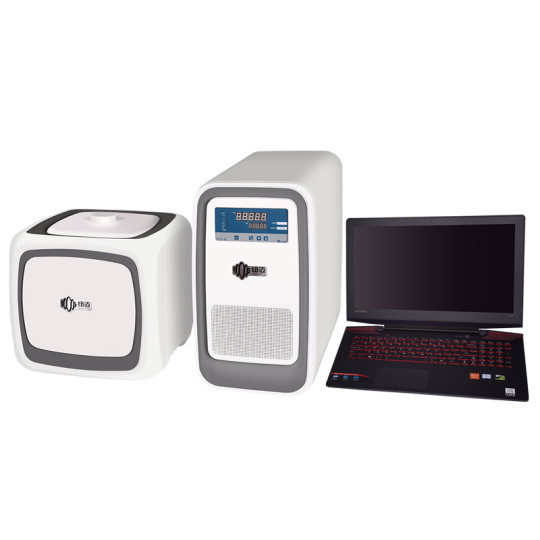
(source:https://www.nmranalyzer.com/what-is-time-domain-nmr%ef%bc%88td-nmr%ef%bc%89.html)
0 notes
Text
Advantages of LF NMR
NMR is often performed in massive magnetic fields for 3 reasons: to enhance chemical shift resolution, to maximize the sensitivity of detection by inductive coils, and to extend the magnitude of the measured signal by enhancing thermal polarization LF NMR. However, these benefits come back at a literal and figurative price – trendy superconducting magnets with sufficient homogeneity for magnetic resonance experiments will cost upwards of $1 million, are immobile, and should be maintained at refrigerant temperatures. As an alternative, by performing arts NMR experiments at zero-field, it’s doable to retain several of the powerful analytical capabilities of high-field NMR, while not the limitations obligatory by the necessity} for giant magnetic fields.
Nuclear resonance (NMR) is one in every of the foremost powerful analytical tools on the market to the chemical and biological sciences for chemical detection, characterization, and structure elucidation. However, the high magnetic fields needed for typical magnetic resonance require large, immobile, and high-priced superconducting magnets, limiting the utilization of the technology. By performing arts NMR experiments at low magnetic fields, the equipment becomes considerably cheaper and a lot of portable. Our low-field instruments additionally feature very undiversified fields, that cause slender resonance lines, allowing the activity of tiny couplings and therefore the resolution of chemical species. As a result, these new techniques create magnetic resonance a lot of analytically powerful and accessible to a wider audience. Our continued analysis efforts are targeted on understanding spectra, development of recent experimental techniques for the study of chemical structure and dynamics, optimization of detection instrumentation, and signal improvement for improved experimental efficiency.
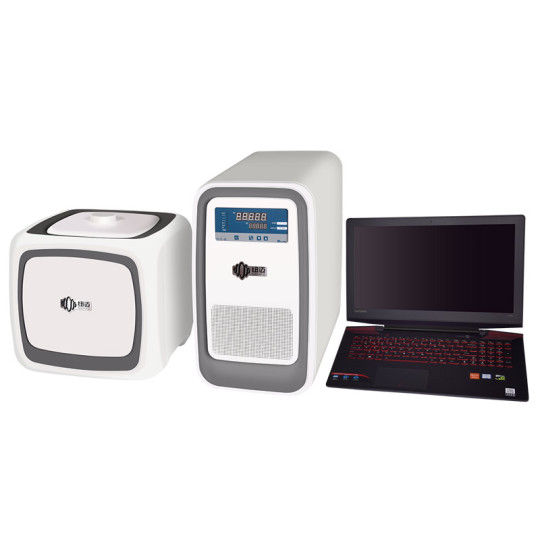
(source:https://www.nmranalyzer.com/advantages-of-lf-nmr.html)
0 notes
Text
Typical applications in rock core NMR analyzer
(1).Reservoir physical properties analysis
1. Porosity measurement 2. Pore size distribution 3. Oil/water saturation 4. Movable/bound fluid saturation 5. Permeability/wetting evaluation 6. Stratified moisture content 7. Layer selection CPMG
(2).Evaluation of oil and gas reservoir development
1. Shale gas/coal bed gas temperature-change adsorption and desorption 2. CO2 competitive adsorption experiment 3. Natural gas hydrate formation/decomposition 4. Supercritical CO2 fracturing/displacement gas
(3).Unconventional energy
1 Quantitative testing and analysis of fracture development during fracturing 2 Online analysis of pore development during acidification 3 Experimental analysis and evaluation of oil-water two-phase high temperature and 4 high pressure visual displacement experiment 5 Analysis of Gas-Water Two-Phase Dynamic Displacement 6 Analysis of online testing of polymer flooding and chemical flooding 7 Analysis of microscopic pore-seepage parameters under load (confining pressure/water pressure) 8 Triaxial compression damage analysis
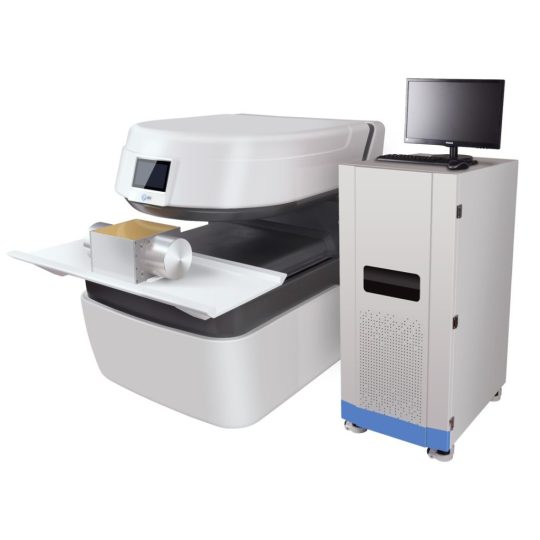
(source:https://www.nmranalyzer.com/typical-applications-in-rock-core-nmr-analyzer.html)
0 notes
Text
What is NMR spectroscopy analyzer?
The NMR analyzer is mainly composed of magnetic field, field stabilization and shimming system, radio frequency source, probe, receiving system, signal recording and data processing system, and some accessories such as temperature change unit
The function of the magnetic field is to split the magnetic energy machine of the nuclear spin system. Generally, permanent magnets or electromagnets are used for spectroscopy below 100MHz to generate magnetic fields, and magnetic fields for nuclear magnetic spectroscopy above 100MHz are generally generated by superconducting magnets. The superconducting magnet has good magnetic field stability and field uniformity, which can improve the sensitivity of the spectroscopy and enhance the resolution.
The field stabilization and shimming system enhances the stability of the instrument and the uniformity of the magnetic field to meet the magnetic field stability required by the trans experiment, 3D experiment, and 4D experiment. The field stabilization system required by electromagnets is relatively complicated, and the field stabilization system of permanent magnets and superconductors is relatively simplified. At present, ten to twenty sets of shim coils can meet the requirements
NMR spectroscopy, also known as nuclear magnetic resonance spectroscopy, nuclear magnetic resonance spectroscopy. A spectroscopy that uses nuclear magnetic resonance for proton and atomic nucleus analysis to study changes in chemical and physical quantities in a wide frequency range. It is an instrument for nuclear magnetic resonance analysis. It is mainly composed of external magnetic field (permanent magnet, electromagnet and superconducting magnet), radio frequency oscillator, detection probe, radio frequency receiver, scanning generator and recording system. The radio frequency wave generated by the radio frequency oscillator is modulated and enters the probe. The probe is equipped with a sample tube and a coil that transmits and receives radio frequency waves to the sample. The information obtained is detected and amplified by the receiver, and then sent to the recorder to obtain the nuclear magnetic resonance spectrum.
There are two types of instruments:
①Continuous wave spectroscopy, the radio frequency wave generated by the radio frequency oscillator continuously irradiates the sample according to the frequency, and the frequency spectrum can be obtained;
② Pulse Fourier Transform Spectroscopy, the radio frequency wave generated by the radio frequency oscillator irradiates the sample in a narrow pulse mode, and the obtained time spectrum is Fourier transformed to obtain the frequency spectrum.
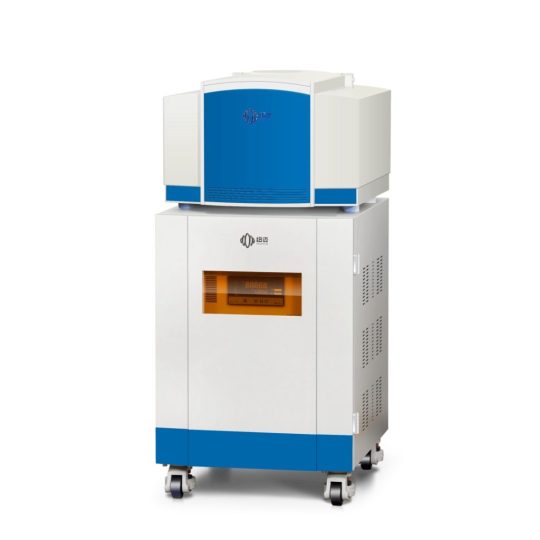
(https://www.nmranalyzer.com/what-is-nmr-spectroscopy-analyzer%ef%bc%9f.html)
0 notes
Text
Time Domain Nuclear Magnetic Resonance Application Exploration
Time Domain Nuclear magnetic resonance (NMR) may be a powerful analytical tool employed in analysis to get elaborate info regarding the structure, dynamics, reaction state, and chemical setting of molecules and in medication to supply pictures of soppy tissue.
There are various distinct nuclear magnetic resonance methodologies all supported the principle that exposure to a magnetic field, causes nuclei to be elevated to the next energy level, and this energy transfer is reversed on removal of the magnetic field. the various techniques are broadly speaking classified as spectroscopic analysis, imaging or relaxometry.
The high value and ponderous nature of instrumentation for NMR spectroscopy and imaging stems from the need for high-field superconducting magnets to attain chemical shift resolution. NMR relaxometry (also referred to as time domain NMR) is performed while not spectroscopy or imaging, and then can be conducted victimization smaller, less costly low-field permanent magnets. though this system sacrifices the ability of atomic or special resolution, it is the benefits of being transportable associate degreed cost-effective. For this reason, despite being less powerful time domain nuclear magnetic resonance is gaining in popularity. It permits NMR to be employed in settings on the far side the specialized NMR laboratory or imaging center and is being utilized in an ever-increasing vary of applications.
Time domain NMR(TD-NMR)
Time domain NMR measures the time needed for nuclei to come to equilibrium when excitation. it is widely known as a reliable, convenient, speedy analytical methodology that shows high reproducibility while not the requirement for sample preparation and is non-destructive.
A form of benchtop, compact time domain nuclear magnetic resonance spectrometers are developed which will achieve 1H resonance frequencies of roughly 5–60 megahertz (that is around one-to-two orders of magnitude not up to the traditional NMR spectrometers).
In addition to being more cost-effective and portable, time domain NMR spectrometers accommodate a far wider vary of sample type, together with semi-solid or liquid crystalline samples and heterogeneous samples. Consequently, there are many analytical tasks that can be adequately addressed without the need for high-end spectroscopic analysis or imaging.
Having been over-shadowed for several years by tremendous advances in high-field spectroscopy and imaging, time domain nuclear magnetic resonance is creating a come-back. The movableness and affordability of this easy methodology afford a mess of exciting new opportunities for NMR. Current applications of compact time domain NMR embody quality testing within the organic compound and food industries and diagnostic blood tests, e.g., for internal secretion resistance.
Evaluating Nano fluidity with NMR
One of the various new avenues of analysis within which time domain NMR has been explored is in the determination of nano fluidity in biological systems.
The liquidity of lipid-rich assemblies, such liquid body substance lipoproteins and cell membranes is a crucial consider deciding their physical properties and biological functions1. It will vary consistent with organic compound chain composition and in response to temperature changes. The extent of liquidity of the hydrocarbon chains inside biological membranes is believed to be a key determinant of cell surface receptor function2. Similarly, it can dictate the speed at that sterol within the style of low-density lipoproteins is cleared from the blood3.
Time domain nuclear magnetic resonance is truly higher suited to finding out lipids in cell membranes that NMR spectroscopic analysis since it does not place confidence in chemical shift resolution or slender NMR resonances. Furthermore, the relief time constants given by time domain NMR provide valuable information. organic compound chain fluidity has conjointly been assessed victimizations visible radiation negatron spin resonance; however, this is often related to considerations that the probe might interfere with near structures.
Using a time domain benchtop nuclear magnetic resonance relaxometer with a permanent magnet, researchers studied a series of single-phase carboxylic acid oils4. They were ready to correlate 1H spin−spin time constant constants (T2) obtained by time domain NMR with measures of liquidity obtained employing a viscometer. The technique with success resolved 2 to four T2 parts in biologically relevant fatty acids. T2 values for every domain of the organic compound chain exhibited positive linear correlations with fluidity.
The results from this study illustrate that time domain nuclear magnetic resonance victimization benchtop instrumentation achieves vital physical phenomenon and is sensitive to variations in organic compound chain structure and composition. there is consequently potential for time domain NMR to be wont to monitor Nano fluidity in alternative biological systems.
(source:https://www.nmranalyzer.com/time-domain-nuclear-magnetic-resonance-application-exploration.html)
0 notes
Text
TD-NMR evaluation of poly(vinyl alcohol) xerogels
Time domain nuclear resonance (TD-NMR) – additionally referred to as relaxometry, low-field nuclear resonance (LF-NMR) – may be a speedy and cheap thanks to characterize compound materials. It is supported the measure of the time necessary for relaxation to equilibrium of a magnetized atomic nucleus during a nuclear resonance experiment. This method is said to the molecular dynamics of the sample and can reveal several factors working on the compound matrix, akin to variations in crystallinity, mixing of 2 or additional polymers, presence of plasticizing agents or fillers, cross-linking and others. This versatile tool has been applied in numerous fields, akin to determination of physico-chemical parameters of oil samples, polymer-filler interactions in rubber materials, and reaction observance and quality assurance in industrial processes, to cite a few examples. compound gels are networks containing physically and/or chemically cross-linked segments which might halt the long-distance rearrangements between the compound chains that are answerable for the material’s dissolution and plastic deformation. once compound gels are not filled with fluids, they are dubbed xerogels. This category of compound material has several applications, akin to in tissue engineering, drug delivery, prosthetics and membranes applied in separation processes. numerous efforts have been created to characterize compound gels through TD-NMR, however the bulk of the reportable strategies involve soaking the sample during a solvent, with the analysis being conducted below strict temperature conditions , or limiting the chemical nature of the compound matrix to elastomers . during this work, we tend to obtained xerogels supported with chemicals cross-linked poly(vinyl alcohol) (PVA) and polyvinyl resin loaded with nanoparticulate deliquescent oxide (SiO2). These materials were characterized by LF-NMR techniques and supporting chemical analysis characterization methods, akin to Fourier-transform infrared (FT-IR) and wide-angle X-ray diffraction (WAXD). Our aim was to use the knowledge obtained in the main through TD-NMR to qualify and quantify the changes caused by cross-linking and inorganic filling of the polyvinyl resin matrix.
https://www.nmranalyzer.com/td-nmr-evaluation-of-polyvinyl-alcohol-xerogels.html
0 notes
Photo
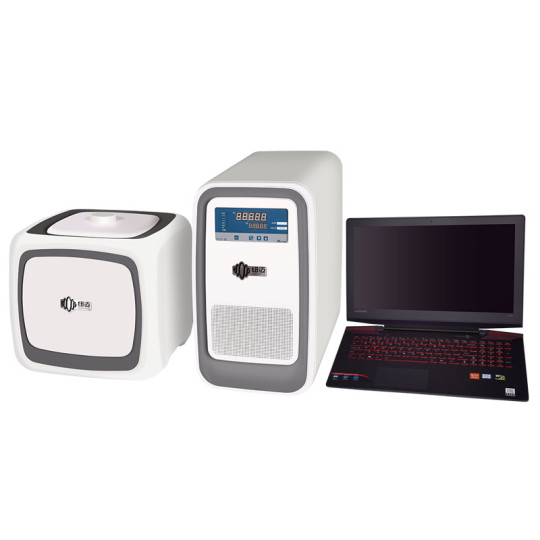
https://www.nmranalyzer.com/time-domain-nmr-and-2d-spectrum.html
0 notes
Text
Time-domain NMR and 2D spectrum
2D time-domain NMR spectroscopy technology is currently a research hotspot in the field of NMR. By using this technology, researchers in different fields have made a lot of application attempts. We uses 2D spectrum technology to guide and evaluate existing biofuel production processes and provides a new and reliable tool for finding new sources of biofuel production. We also use time-domain 2D spectroscopy technology to evaluate the extent of apple water heart disease. In addition, the 2D spectrum is also used in different fields such as the evaluation of the baking process of iron-rich ceramics, the evaluation of the permeability of biofilms and the evaluation of microbial enrichment technology of precious metals. As a new tool for analysis and testing, time-domain NMR 2D spectroscopy technology has promoted the development of related disciplines to a certain extent.
The 2D time-domain spectroscopy technique is different from the traditional magnetic resonance technique. Magnetic resonance imaging is a typical application of Fourier transform. The image is obtained by Fourier transform on the data after phase encoding and frequency encoding. Generally speaking, the higher the main magnetic field strength, the higher the image quality that can be obtained. Therefore, the development of magnetic resonance imagers tends to use higher field strength main magnetic fields. The Fourier transform is also used in the liquid NMR analysis technique. This technique requires the use of a higher-strength main magnetic field to reflect the influence of the small difference in the electron cloud distribution between different molecular structures on the resonance frequency, high resolution High-speed liquid NMR analyzers are generally high-field equipment. High-resolution solid-state NMR technology introduces methods such as magic angle spinning (MAS) to eliminate the anisotropy of solid molecules and improve the resolution of chemical shift spectra. The subsequent processing still needs Fourier transformation. The Fourier transform is the basic data processing method in the widely used NMR technology, and in the time-domain 2D spectrum technology, Laplace transform is replaced. The chemical shift spectrum is a typical frequency domain spectrum, and the time domain 2D spectrum technology obtains the time domain spectrum related to the molecular dynamic characteristics (longitudinal relaxation time T1, transverse relaxation time T2, diffusion coefficient D, etc.).
High-resolution NMR can even provide a “fingerprint” corresponding to the molecular structure. This is the advantage of high-field equipment under the condition of high signal-to-noise ratio, but it is also a disadvantage under certain application conditions. For example, in the fields of food, agriculture, etc., obtaining relevant information about free water, bound water, and water between these two states has important reference value for conventional processes such as storage and sorting. Obviously, the “fingerprints of water in different states” “It’s exactly the same. In the fields of biomedicine, life sciences, etc., obtaining information on the size of molecular clusters also has great practical value. When the components of the clusters are relatively single, it is easy to form peak aliasing using chemical shift spectra. If time-domain NMR time-domain spectroscopy technology is used, this information can be obtained intuitively through the distribution of peaks.
The original signal obtained by sampling through a 2D sequence cannot generally be used directly, and the 2D spectrum obtained after inversion has a clear and intuitive meaning. In theory, 2D time-domain spectra can also be obtained on high-field equipment. However, high-field equipment has higher requirements for magnetic field uniformity and may also induce strong internal gradients in samples with ferromagnetic particles, which seriously affects the reliability of sampled data. However, the signal-to-noise ratio of the sampled signal using time-domain equipment is very low, coupled with the sensitivity of the Laplace transform to noise, which makes the stable and reliable 2D spectrum inversion very challenging.
(source:https://www.nmranalyzer.com/time-domain-nmr-and-2d-spectrum.html)
0 notes
Text
Low-Field NMR Analyzer in Use
Nuclear magnetic resonance (NMR) utilizes the interaction between a static magnetic field and the magnetic moments of atomic nuclei in a superimposed electromagnetic alternating field.
The low-field NMR analyzer (solid-state NMR used for relaxation examination uses a static magnetic field of 1 Tesla or less, and the operating frequency is between 10 MHz and 50 MHz. Due to its relatively small size and simple operation, it has great potential in quality control and industrial applications. Pulse sequences such as Hahn-Echos and CPMG are used. The longitudinal relaxation time (spin lattice relaxation time) T1, the transverse relaxation time (spin-spin relaxation time) T2 and the signal amplitudes A1 and A2 are explained and analyzed.
Application areas include the inspection of elastomers and rubbers (such as crosslink density), the determination of the phase composition of polymer mixtures, or the degree of crystallization of thermoplastics. In particular, it is possible to determine the content of proton-rich phases such as oil, grease, water or plasticizers in the polymer. Even processes that change with time and temperature, such as aging, crystallization, and relaxation properties, can be detected with low-field NMR analyzer.
In addition to the described low-field NMR analyzer for temperature-dependent relaxation inspection and analysis of single-sided, spatially resolved, flat specimens (sections), Fraunhofer LBF can also use various high-resolution NMR spectrometer for chemical analysis.
Although not so useful in chemical analysis, in some applications, low-field spectrometers can provide sufficient resolution for NMR analyze, such as QA/QC and reaction monitoring. This has triggered a renaissance in the development of permanent magnet technology because permanent magnets have better facilitated the integration of NMR technology into routine industrial analysis-in the field laboratory or even on a truck.
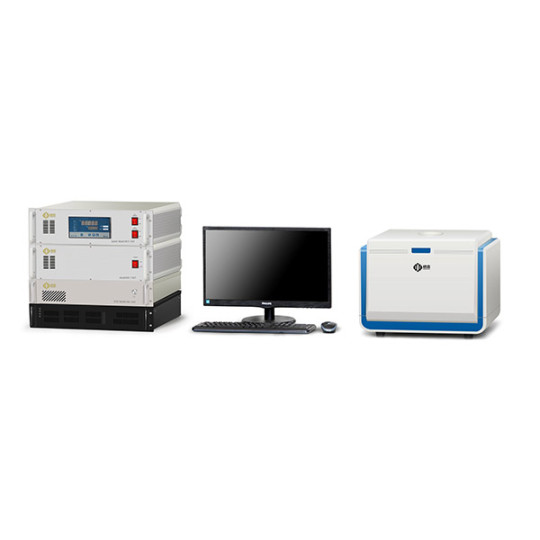
(source:https://www.nmranalyzer.com/low-field-nmr-analyzer-in-use.html)
0 notes
Text
Time-domain NMR compared with conventional method in oil determination
The oil and water content indicators in food are very important, but the current detection methods are slightly behind. There are many complicated systems in which oil and water coexist in food. The content and distribution of the two components of oil and water determine the edible quality and storage stability of the final food. The rapid increase in the incidence of obesity, cardiovascular and cerebrovascular diseases among the population in recent years has also prompted people to pay more and more attention to research on reducing the oil content of food, controlling and reducing oil intake. Conventional methods for determining oil and water content-Soxhlet extraction method, oven method time-consuming, poor stability, easy to be interfered.
And Time-Domain NMR can be used for the simultaneous analysis and determination of oil and water content in fried food systems.
Combined with the operation of the oven drying experiment, the attribution of the oil-water signal in the low-field nuclear magnetic transverse relaxation spectrum of the fried food system was determined. We found that the oil-water signal did not overlap and had clear independent boundaries. This laid the foundation for the establishment of a method for simultaneous determination of water and oil content using Time-Domain NMR.
First, Time-Domain NMR technology is non-destructive, fast, and green. Compared with the traditional Soxhlet extraction method and drying method, it has great method advantages. It does not require chemical reagents, is harmless to the human body, and is environmentally friendly. Compared with the near-infrared method, the Time-Domain NMR technique is a direct test without many models. In view of the phenomenon that the color of the fat frying process gradually darkens, the Time-Domain NMR method is completely unrestricted.
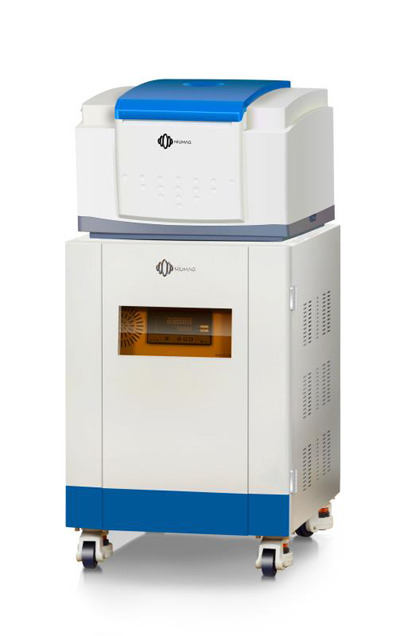
(source:https://www.nmranalyzer.com/time-domain-nmr-compared-with-conventional-method-in-oil-determination.html)
0 notes
Text
Application of Benchtop NMR in the field of petroleum energy
After more than 40 years of development, the petrochemical industry has occupied an important position in the national economy and has gradually become one of the country’s pillar industries. With the substantial increase in petroleum consumption worldwide, petroleum resources are increasingly depleted, and the continuous increase of inferior oil products puts the refining industry facing severe tests. At present, laboratory test methods are commonly used in the analysis of material components in the petrochemical industry, and the test results need to wait for more than 6 hours. Because the analysis cycle is too long, the analysis value lags, and the real-time and reliability of the various data of the product cannot meet the corresponding requirements. After research and analysis, NMR technology can be effectively used for oil detection, and accurate analysis values can be obtained in only 6-10 minutes, which not only greatly shortens the detection time, but most importantly, it can control product quality in time, which can effectively Avoid the appearance of unqualified products caused by manual analysis errors, thereby reducing production costs and reducing losses, and can be widely used in petrochemical industries.
Benchtop NMR technology is based on the basic principles of NMR. The Benchtop NMR takes online samples from the process pipeline. The sample is drained through the permanent magnetic field system, and radio frequency pulse energy is emitted to the sample stream through the probe system. All rotating protons in the sample process and produce energy level transitions. . When the radio frequency pulse signal is removed, the proton releases energy and eventually returns to its original axis. During this process, they will generate a free induction attenuation signal that decays exponentially, and the probe system induces data acquisition and processing by the Benchtop NMR and uploads it to the computer system. The signal is filtered, processed by a computer, and converted into a frequency domain map. The frequency domain data is analyzed and forecasted by a chemometric calibration model to produce the analysis results of the chemical composition and other physical characteristics required by the user.
At present, most of the traditional online process analyzers we use are improved from laboratory instruments. Due to the limitation of detection principles, one instrument can only detect one parameter. If you need to measure multiple parameters, you need to purchase multiple instruments. The equipment investment is large, the maintenance amount is large, and the maintenance frequency is high. The Benchtop NMR can realize the analysis of material components and online detection of process parameters in the petrochemical industry, with fast analysis speed, accurate and reliable analysis results, and timely feedback to the DCS system, providing real-time online analysis and quality card edge control for the refining and petrochemical industries. Distillation, catalytic reforming, ethylene cracking unit, refined oil blending and optimization provide fast and accurate composition and index analysis results.
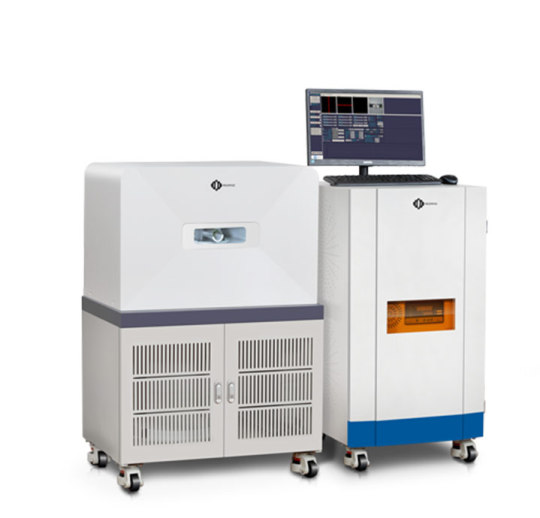
(source:https://www.nmranalyzer.com/application-of-benchtop-nmr-in-the-field-of-petroleum-energy.html)
0 notes
Text
Beef Refrigeration Process and LF-NMR Analyzer
Beef is rich in nutrients and perishable. It is a common meat in daily diets around the world. Low temperature can inhibit the growth of microorganisms and enzyme activities in meat, but chilled beef will inevitably deteriorate during the manufacturing, transportation and storage processes, resulting in poor beef quality, such as taste, discoloration and other physical and chemical changes. Therefore, it is necessary to evaluate changes in beef quality during cold storage.
Traditional physical and chemical methods are susceptible to subjective and environmental factors and have poor repeatability. As a fast and non-destructive detection method, LF-NMR analyzer has been widely used to study the state and distribution of moisture in food.
LF-NMR relaxation parameters combined with chemometric methods have successfully achieved the prediction of moisture content, fat, and quality parameters in fresh beef samples. However, there are few studies on the change and distribution of moisture status of beef during cold storage and the relationship with other quality indicators.
In the process of beef refrigeration, the lateral relaxation time and peak area of the difficult-to-flow water were significantly reduced. The change of microstructure caused by deterioration may be the main reason for the decrease of water mobility, water content and water holding capacity. PLSR analysis results show that there is a strong correlation between CPMG relaxation data and traditional quality indicators such as pH, TVB-N, and TBARS. Principal component analysis results show that LF-NMR analyzer can identify beef samples with different storage times.
The results show that LF-NMR analyzer as a fast and non-destructive detection method can replace traditional physical and chemical methods to assess beef quality.
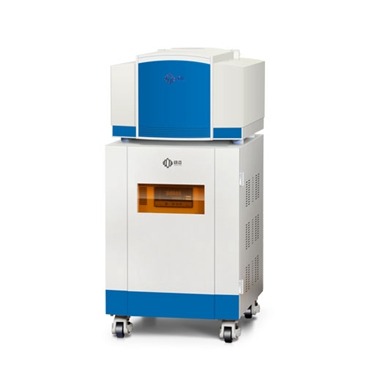
(source:https://www.nmranalyzer.com/beef-refrigeration-process-and-lf-nmr-analyzer.html)
0 notes
Text
Rock Core NMR Device
NMR technology can be used to determine the distribution of H proton transverse relaxation time T2 and longitudinal relaxation time T1, which represent the pore structure around spin molecules (such as pore water). NMR technology has been widely used in food, petroleum and soil fields because of its non-destructive and high efficiency. In recent years, rock core NMR device has been used to detect core pore structure, identify the synthesis and decomposition of natural gas hydrate, and measure the unfrozen water content in frozen soil. Compared with traditional testing methods (CT, scanning electron microscopy and time domain reflectometry), NMR is the only method that can directly and non-destructively detect the content of water molecules.
At present, NMR logging is based on one-dimensional NMR technology, which only measures the lateral relaxation time information of formation pore fluids and cannot distinguish whether these signals come from oil or water. When oil, gas and water exist at the same time, their T2 signals overlap. The fluid identification methods such as Difference Spectrum Method (DSM), Shift Spectrum Method (SSM), Time Domain Method (TDA), Diffusion Method (DIFAN) and Diffusion Enhancement Method (EDM) proposed earlier have certain limitations in practical applications.
Two-dimensional NMR logging expands the distribution of the number of hydrogen nuclei in the pore fluid from one-dimensional single T2 relaxation variable to two-dimensional two variables, making full use of the information from NMR observations to open up a new field of NMR logging rock physics research .
Two-dimensional NMR logging is a new NMR logging method developed by applying the concept of 2D NMR spectroscopy to petroleum logging. According to the difference of oil-water diffusion coefficient, the oil-water signal can be distinguished on the two-dimensional spectrum. As the focus of domestic exploration and development gradually shifts to deep and complex oil and gas reservoirs, two-dimensional NMR logging will be an indispensable high and new technology for quickly and early judging the hydrocarbon prospects of complex oil and gas reservoirs.
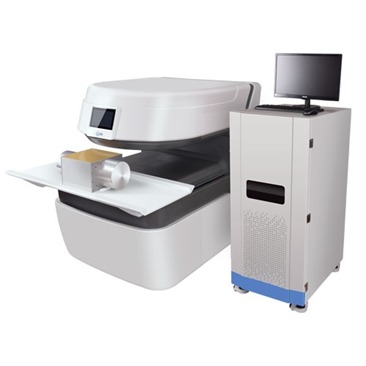
(source:https://www.nmranalyzer.com/rock-core-nmr-device.html)
0 notes
Text
Rock Core NMR Analyzer
In the late 20th century, the development of nuclear magnetic resonance (NMR) technology was advancing by leaps and bounds, which attracted worldwide attention for its profound theoretical connotation, advanced technical methods, and wide application range. In China, rock core NMR analyzer has been used in medical diagnosis, molecular spectroscopy and other fields earlier, while its application in the field of oil and gas exploration and development reflects the great wisdom and wisdom of the petroleum people. In our oil and gas field, the application of nuclear magnetic resonance technology can be roughly divided into two parts: rock core NMR logging and indoor NMR experiment.
From the perspective of the technical parameters of NMR, the most commonly used ones include relaxation time (mostly T2 relaxation), nuclear magnetic imaging (MRI) and two-dimensional NMR. T2 spectrum is believed to be the most familiar to everyone. NMR imaging technology can clearly show the dynamic changes in the development process, such as using NMR to explore the distribution of residual oil during water flooding. Two-dimensional NMR uses not only one parameter T2, but two parameters T1-T2 or T2-D.
Rock core NMR analyzer detects the hydrogen nuclear signal. If oil and water are present at the same time, it is difficult to distinguish the oil and water signals only through the T2 spectrum. Therefore, the advantages of two-dimensional nuclear magnetism are reflected. The figure below shows the cores collected from tight oil reservoirs saturated with water and light oil respectively. The vertical axis is T1, and the horizontal axis is T2. Obviously, the signals of water and oil fall in different zones on the two-dimensional NMR spectrum. For heavy oil, gas, etc., similar methods can also be used to build such a pattern
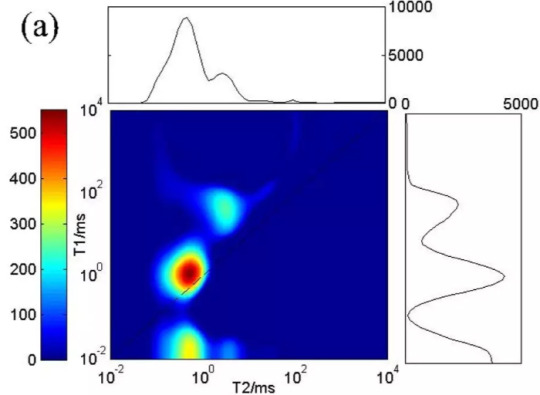
(source:https://www.nmranalyzer.com/rock-core-nmr-analyzer.html)
0 notes
Text
Rock Core NMR system and Shale
Shale has low permeability, low porosity, high clay content and high organic matter content. The lacustrine shale has strong heterogeneity and variable organic matter content. Stratification is a common feature of shale and the main reason for shale heterogeneity. Shale consists of two parts: (a) clay-organic matrix, containing clay minerals and organic matter; (b) inclusions, such as quartz, feldspar and pyrite. Rock pores are mainly composed of clay-related pores and intergranular pores. The physical structural characteristics of shale are not conducive to shale oil production. In addition, due to the absorption and adsorption of hydrocarbons, the highly variable organic matter content is not conducive to shale oil production.
Due to clay swelling, low injection and low impact range, it is difficult to apply water flooding in shale reservoirs, and effective measures for enhanced oil recovery are urgently needed.
With Rock Core NMR system, we can conduct carbon dioxide miscible flooding experiments on oil shale and sandstone under high pressure. According to the Rock Core NMR T2 spectrum distribution curve, the oil in the shale is divided into two parts: fixed oil and free oil. Through the change of Rock Core NMR T2 spectrum distribution curve in the process of carbon dioxide miscible flooding, the recovery factor of oil in different storage states (fixed oil and free oil) was obtained. In addition, the effects of shale heterogeneity, competitive adsorption, and absorption of carbon dioxide-oil mixture on shale carbon dioxide miscible flooding were studied by numerical simulation.
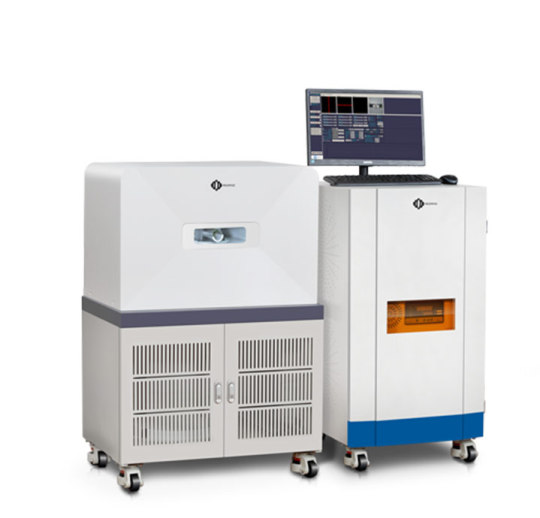
(https://www.nmranalyzer.com/rock-core-nmr-system-and-shale.html)
0 notes
Text
What can Time-domian NMR do?
Time-domain Nuclear magnetic resonance (NMR) is a physical phenomenon in which the nucleus in a static magnetic field is subjected to the electromagnetic wave of the corresponding frequency of another alternating electromagnetic field. After stopping the RF pulse, the nuclei that have transitioned to the high energy state will release the absorbed RF wave energy back to the ground state and reach Boltzmann equilibrium. This process is called relaxation process, and the time required to complete this process is called relaxation time. As the nucleus returns to equilibrium, an NMR signal is produced. During the test, the 1H signal is mainly used to detect the internal moisture. Common NMR signals include free induced decay (FID) and transverse relaxation time (T2).FID signal is the simplest signal form in the nuclear magnetic signal, can reflect the physical characteristics of matter, solid matter FID signal decay faster, liquid matter decay slower.T2 is the process of energy exchange between spin nuclei in the process of nuclei returning from the excited state to the ground state, so it is also called spin – spin relaxation time. Usually, T2 is used to represent the fluidity or freedom of a substance. The greater T2 is, the better the fluidity and freedom of a substance is.
Time-domain nuclear magnetic resonance (TD-NMR), as an advanced characterization method, can rapidly and accurately measure the dynamic changes of free water and absorbed water in samples, and can also represent pore distribution based on water information. Therefore, it has been widely used in the field of scientific research.
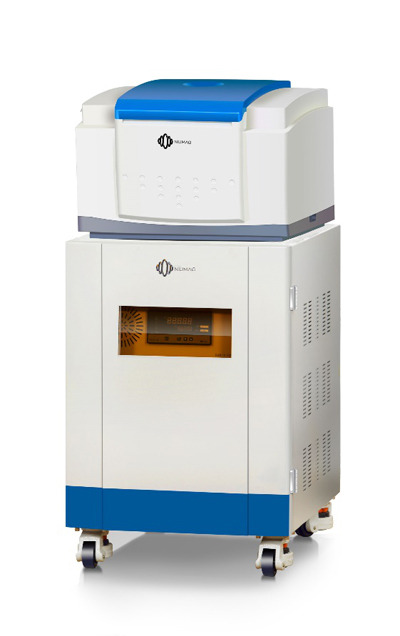
(source:https://www.nmranalyzer.com/what-can-time-domian-nmr-do.html)
0 notes